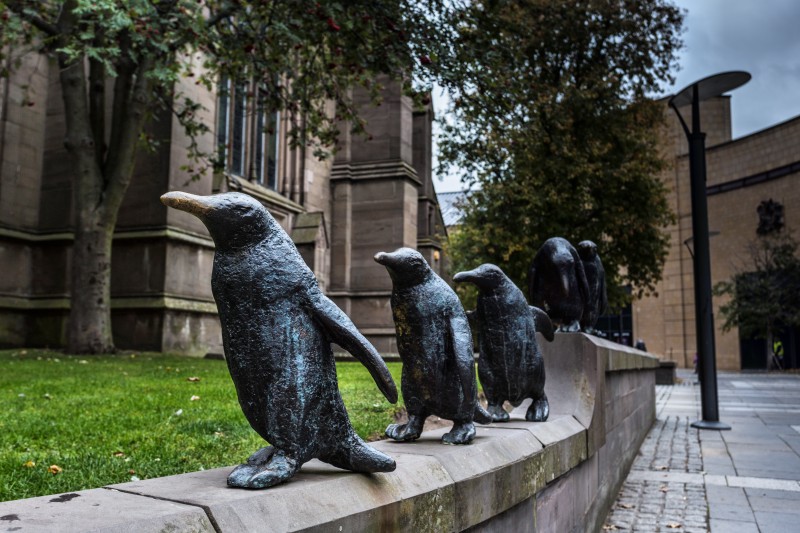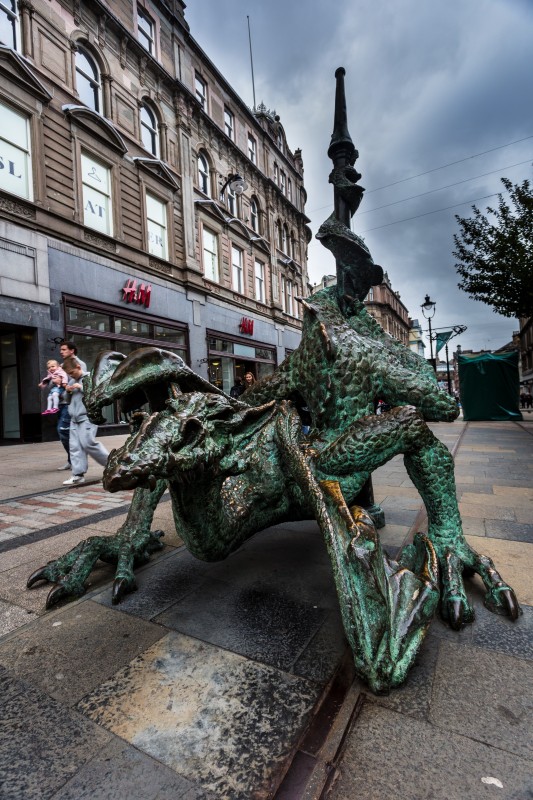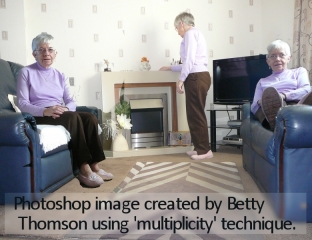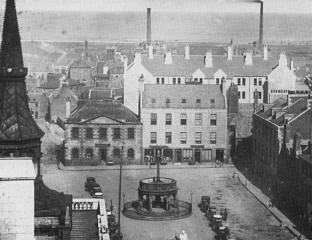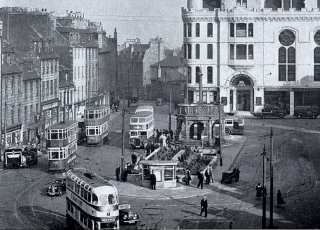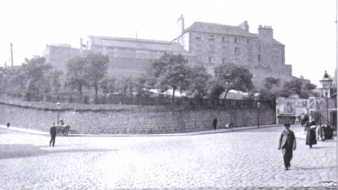The dust has settled on the City of Culture Bid, Round One; Aberdeen did not make the shortlist. Dundee however is through to Round Two. Following a review of bid material, recent events and a visit to Dundee, Suzanne Kelly compares the two cities and offers a few observations.
It was meant to be so simple to win the City of Culture bid and it was meant to be another feather in the cap of Valerie Watt, Aberdeen City Council’s Chief Executive.
She’d been at the helm when Derry won the right to be City of Culture 2013.
For the Aberdeen bid, the usual city council suspects were called in and a number of arts and culture names and experts were signed up to create our submission.
Rita Stephen, sometime secondee to ACSEF, past promoter of the City Garden Project, etc, was seen as the safe pair of hands for this task.
Perhaps this appointment is why the bid often hones in on business retention and economic issues, with ACSEF getting a mention or two. Aberdeen needed to produce a sharp, smart and creative bid.
The bid team had to demonstrate how the city nurtured talent, used existing assets and involved people. It had to demonstrate that it could come up with interesting new ideas.
Seeing as we’re not particularly good at any of these things compared to other cities, the bid was never going to survive round one.
So, how can a city down the road from us, without lots of oil money greasing its wheels, without its own ACSEF, and without a dominant uber-wealthy ruling class outperform Aberdeen?
How did we wind up with the bid submission we produced?
How does our city stack up in the culture stakes against our poor relations in the south?
Would the lusted-after Granite Web in our city centre green space have wowed the judges?
And what was wrong about Aberdeen’s proposed Gigs on Rigs?
Two bids
Dundee’s bid actively seeks input from its citizens and groups. It is well-written with sound ideas based around the arts, people, and the environment. It is clear that rather than drawing up pie-in-the-sky concepts, it drew on its resources and existing practice.
The Dundee update webpage confirms the bid proposals, some of which require a bit more effort, but the proposals are not complete fabrication. They have the arts and culture base because they nourish their arts.
‘”Communities around the Tay Estuary
• a celebration of the environment – connecting the cities green spaces, a festival of the hills in and around Dundee, its yellow flag beach and an outdoor music programme;
• a celebration of our people – a homecoming for those with their roots in Dundee or those who studied in the City;
• a celebration of the light – shining a light on the future, appreciating the quality of light, a night light luminaire and bright minds.”
In terms of consultation, Dundee still want to hear from people with good ideas:-
“…send us ideas for inclusion in the programme. We have limited space in the bid so we won’t be able to include everything, but we want to hear as many ideas as possible”
To consult with people, Aberdeen took over the premises of what had been an independent music retailer, One Up. One Up had been forced to close, and in its day it contributed to our culture in showcasing local and larger acts and carrying local records. Having its husk used for the City’s vehicle of what culture should be felt a bit odd.
 Individuals were invited to write ideas on Post-It notes in the bid centre/One Up. I did, and there were many good ideas.
Individuals were invited to write ideas on Post-It notes in the bid centre/One Up. I did, and there were many good ideas.
There were also notes in pure council speak; such buzzwords as vibrant, dynamic, connectivity and transformational were much in evidence.
If these words did have any power or real meaning, their overuse in every City Council report for decades in Aberdeen has reduced them to meaningless jargon.
Predictably, the culture that was put on offer excluded anything remotely controversial, avant guard, or alternative. This was going to be a corporate, conservative cultural exercise.
As to Aberdeen’s final bid submission, ‘transparency’ was lacking, even to some of those who were supposed to be writing it.
A man who asked staff for a copy of the submission at the bid centre was asked, “And who are you exactly?” He couldn’t get a copy at the City of Culture bid centre. Perhaps this was not the ideal way to win support.
Communicating with Rita Stephen and the FOI office afterwards for a copy should have resulted in the bid being emailed swiftly. In the event, it took several requests to get a copy. The first version received was redacted (ie some text was blacked out for secrecy). We’re used to this in Aberdeen.
Most worryingly, it seems only a very few people had a say in how the bid submission would be carried out or what was going into it, and it is not clear if those in charge consulted widely enough with experienced arts and culture experts before the bid was submitted. What local artists, musicians, venue owners were asked for opinions? Who wrote the submission and who read it afterwards?
Various one-off, specially commissioned events took place during the lauch run-up. Despite the Lord Provost’s speech at an open photography exhibition in the gallery in which he stated that this would be a year of culture with or without bid success, the signs are this promise is fizzling out quickly.
This photography show at One Up / the Bid office exhibited some good work, but there were far too many photos displayed too closely together. Hundreds of 3” x 5” images, only inches apart, competed for attention. A roughly-constructed installation piece with sound inside didn’t exactly fire the imagination.
Two Environments
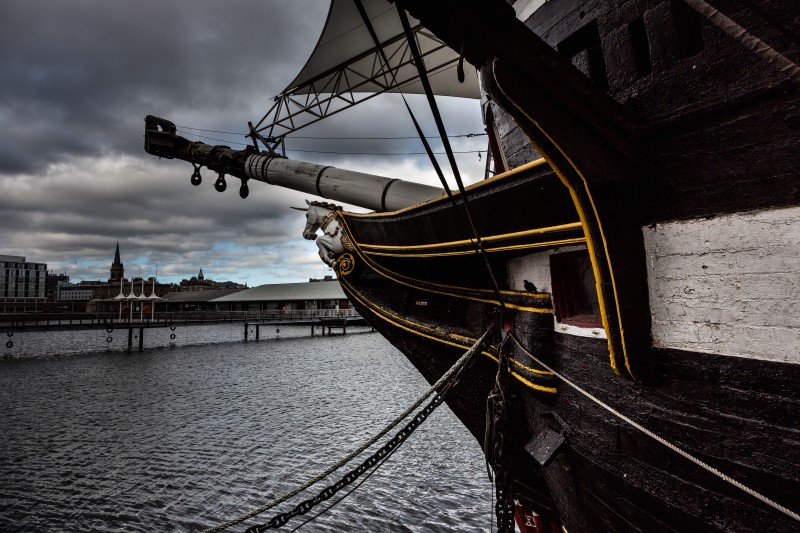 Dundee loves its waterfront featuring HMS Discovery.
Dundee loves its waterfront featuring HMS Discovery.
It loves the lesser-known Unicorn, a beautiful, preserved frigate open for tourism and events.
The city holds events on and around the waterfront.
Its town centre nightlife seems to lack as much severe public drunkenness as dominates nights here, although it does exist, as it does in any other city.
It respects its green park. The river is for walking along, stopping at Discovery or Unicorn, or popping into a hotel bar.
A new leisure complex has been erected on a site which is being revamped. The V&A will soon be on the riverside, creating real arts jobs where the old leisure centre stood. This is regeneration.
Aberdeen chooses to ignore the leisure potential of Nigg Bay, for instance, and financially-motivated expansionists want to allow the industrial harbour to take over this important unspoilt recreational site.
What that would mean to the life – wild, aquatic and human – in Torry in health terms can’t be good. Nigg Bay has two SSSIs, not that this otherwise important environmental protection matters in Aberdeen or Aberdeenshire, as witnessed by Trump’s Menie development.
East Grampian Coastal Partnership sensibly and reasonably proposed to construct a small leisure and learning marina, but this idea seems to have been cut adrift. North of the industrial harbour, which by some coincidence has two of Scotland’s most polluted roads – Market Street, and Wellington Road – adjacent, is the Fun Beach.
Admittedly some good events do take place nearby, but where there was opportunity for interesting seaside bars, restaurants and hotels, identikit shopping malls exist instead. Many on the seafront have no views out to sea, a waste of waterfront opportunity.
Two Cultures
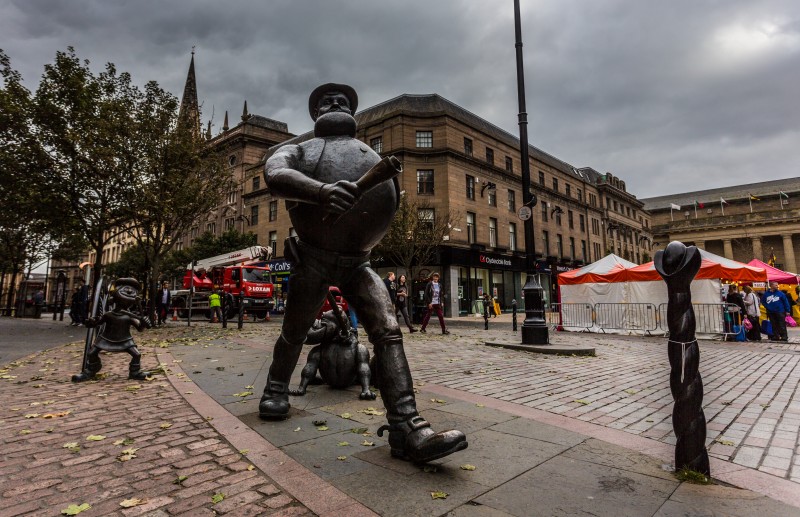 Dundee loves the arts. Public sculptures abound, and whilst tourists don’t visit specifically for the bronze Desperate Dan, Minnie the Minx or the wonderful dragon, these public artworks are appreciated, photographed and posed with.
Dundee loves the arts. Public sculptures abound, and whilst tourists don’t visit specifically for the bronze Desperate Dan, Minnie the Minx or the wonderful dragon, these public artworks are appreciated, photographed and posed with.
The city centre was busy the weekend I visited. Many were tourists who’d come for the day. I was handed a flyer for a fashion/vintage show. A dignified, attractive, creative market was taking place. Posters advertised bands and art events.
The best summary of what is already in place in Dundee comes from its bid literature:
- The V&A@Dundee will generate over 300,000 visits per year and 200 jobs.
- In 2012 there were 2,414,362 attendances recorded at cultural venues in the city.
- In 2012 217,009 people attended festivals and events in Dundee.
- Dundee is home to several independent creative collectives –Tin Roof Collective, Generator Project, WASPS, Vanilla Ink and Fleet Collective – with the aim of providing supportive space and resources for designers and artists.
- Discovery, Scotland’s International Film Festival for young audiences was the joint recipient of an international award for youth cinema in 2012.
- Dundee Rep is a leading Scottish cultural institution. It comprises the only full-time repertory theatre company in the UK, Scotland’s contemporary dance company and a cutting-edge community learning team.
- Scottish Dance Theatre tours internationally as cultural ambassadors from Scotland.
- Leisure & Culture Dundee was Scotland’s first charitable incorporated organisation to bring together a portfolio of culture, heritage, library and sporting resources into one charitable organisation.
- Creative Dundee has hosted global event night, Pecha Kucha Night events quarterly, since bringing them to the city in November 2011. The speed-presenting format has a 200-strong audience attend each event and has had over 80 local, national and international presenters talk.
- In 2013 Dundee City Libraries won the UK Bookseller of the Year award for public libraries.
- The Mills Observatory is the only full-time municipal observatory in the UK.
- Broughty Ferry Castle is managed in partnership with Historic Scotland, is an icon at the mouth of the Tay with a dramatic and bloody history.
- Caird Hall is one of Scotland’s most popular city centre conference and cultural venues.
- The award winning McManus: Dundee’s Art Gallery and Museum collections of fine decorative art and whaling artefacts have been designated collections of national importance.
- Duncan of Jordanstone College of Art & Design has an international reputation for being at the forefront of contemporary research in art and design.
The Duncan of Jordanstone arts campus is a short walk both to the town centre, and the river, Gray’s School of Art is a ten minute minimum bus ride away from our city centre.
Aberdeen has a great gallery with some outstanding work and exhibitions and we are fortunate that the annual National Gallery Portrait Awards tour stops here. The Arts Centre also plays host to a number of events and smaller groups and artists.
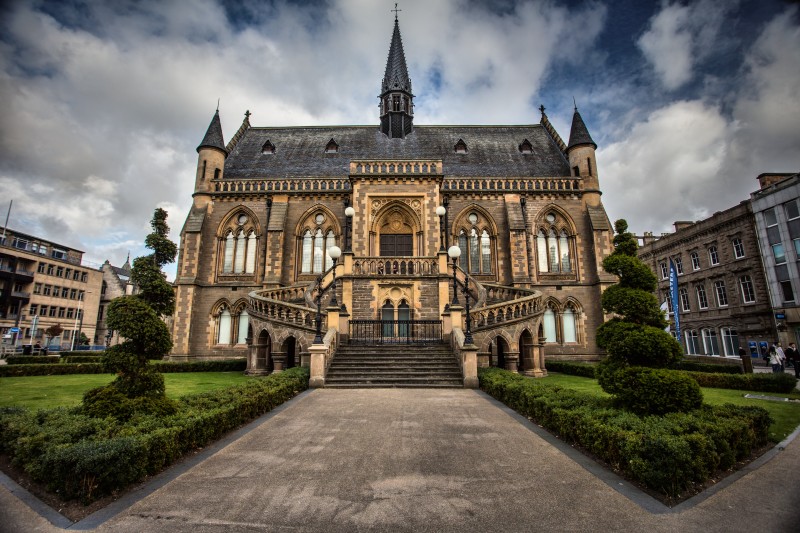 However, the city’s treatment of local arts groups in the recent past is nothing to be proud of.
However, the city’s treatment of local arts groups in the recent past is nothing to be proud of.
News does travel through the arts community, and Aberdeen has some damage control to do.
The Granite City has at least one bona fide billionaire who makes a big show of wanting things to improve, via building in a common good land garden rather than brownfield, whilst insisting the geographic centre must be the sole focal point.
The world’s great cultural centres, including Rome, Paris and New York do not share this myopia (nor do Edinburgh, Glasgow and Dundee).
Sadly, when it came to saving the small, independent Limousine Bull Arts collective, none of our well-meaning patrons could find their chequebooks. This modest collective brought art exhibitions, training and studio space to Torry, a supposed priority area for improvement.
Past shows have included a dramatic historical exhibition on the effects on Aberdeen of the Second World War, a show of members’ work, and work created from some of their life drawing students. It brought people into Torry to talk about and enjoy art. The collective had to close its Torry premises due to lack of the sort of funds our city fathers might spend on a good weekend trip.
What can be said about Peacock Visual Arts and how it got so far with its vision for an arts centre, only to be subsumed in a monstrously out-of-scale City Square or Garden Project? The proposal for the Peacock centre wasn’t loved by all, but compared to subsequent ideas, the Peacock plan was the least disruptive, most affordable and most environmentally-sensitive of all.
Years earlier, the then Arts Council ring-fenced £1m or so for an arts project involving the Citadel. It was in no small part down to the then City Council’s lack of diligence that this never happened. The deadline came and went whilst the administration was inactive.
Perhaps the worst, most visible recent slap in the face for arts, culture and charity was the closure of the worthwhile, creative venture, the Foyer.
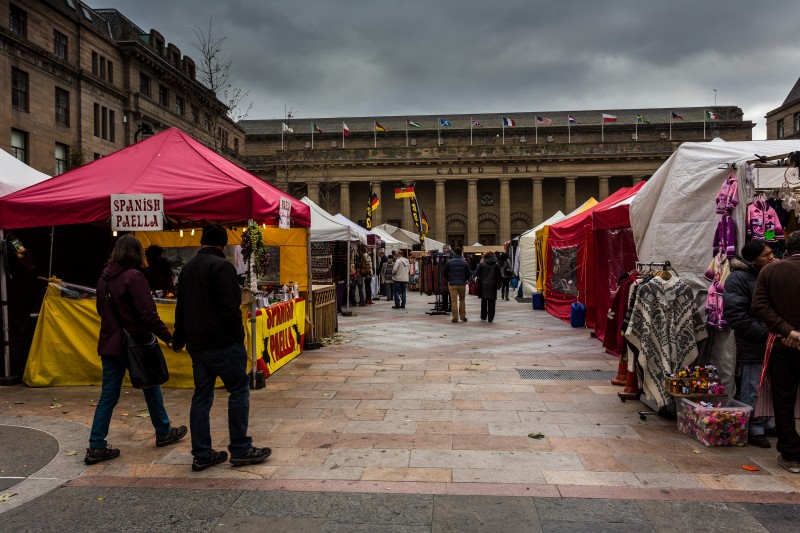 All manner of good work took place here, from helping people conquer their problems to encouraging fledgling artists to hold exhibitions of their work in the restaurant.
All manner of good work took place here, from helping people conquer their problems to encouraging fledgling artists to hold exhibitions of their work in the restaurant.
Why couldn’t we save the Foyer?
Why couldn’t public and private money be found?
Why has nothing else come along to do the necessary work it did?
The administration, Valerie Watts and Rita Stephen, who seems to have had a large hand in preparing the bid, seem unaware that these lost opportunities, thwarted arts groups and other initiatives could have been the very foundation for an independent arts scene. The council runs arts courses and arts events.
Does it have some kind of issue with supporting non state-sponsored or patronised artist and art groups? You could be forgiven for thinking so.
For real progress, and for creativity and community culture and art to grow, the city administration might want to consider loosening its controlling, conservative hold, whilst providing reasonable, accountable financial support. In less-controlling, insular areas, you’ll find arts and cultural activity taking place without having to have a government logo stamped on every ticket and every programme.
Two Visions
 Dundee is encouraging people to use its many facilities, to create, to spend time in its existing contemporary arts centre.
Dundee is encouraging people to use its many facilities, to create, to spend time in its existing contemporary arts centre.
It has a large open green space with a pavilion at the end of the Tay. No-one is seeking to destroy it and no one is complaining it is under-used.
It is a park. It is a green, healthy space. It is there for when it’s needed for relaxation or for events.
Dundee’s jute, jam and journalism tradition has evolved, and past, present and future are all valued here. The events proposed, the venues existing and the forthcoming V&A will enhance what is already there and encourage more visitors.
With its great reserves of personal wealth, helped here and there by offshore tax haven use and abuse, Aberdeen seems to have a considerable gap between the have-nots and the have-yachts.
Arts and music education for school children were cut by the previous administration. We have a mentality here, personified in some of our most successful – financially speaking – residents, that the purpose of education is to learn how to do a job servicing the oil industry. Humanities and arts are not as much a priority here as in Edinburgh, Glasgow, and of course Dundee.
This attitude towards culture and the arts is reflected throughout most of Aberdeen.
The bill of goods we’re being hard-sold is that to fix our retail and city centre social problems, we have to build something in the only green common good land we have. No-one seems willing to rejuvenate our considerable brownfield sites, where potential exists for positive social and cultural improvement, or encourage use of the closed Union Street shops.
Money rules here, but that is not always translated to the makers, artists, creators and arts educators in the private sector. Those teachers, small bars, clubs, galleries, art collectives which do exist, deserve our sincere thanks and our funding.
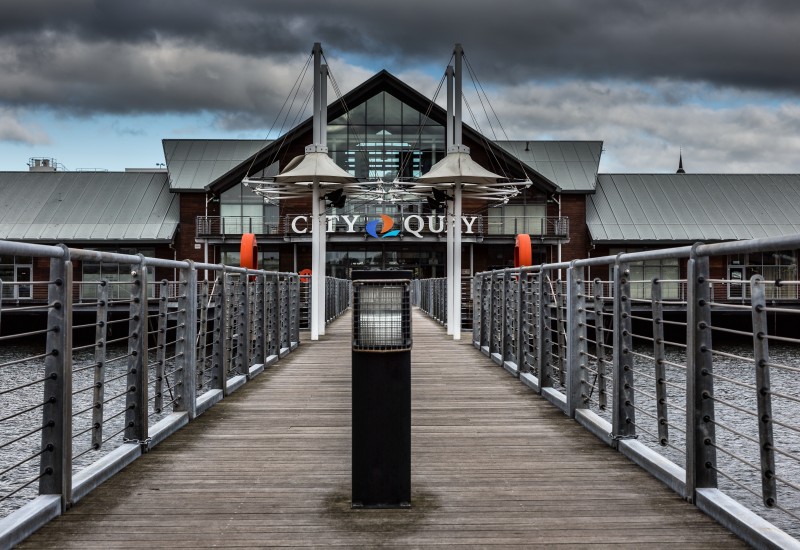 Where Dundee has a host of well-thought through proposals, we had a no doubt well-meaning art student draw attention to our bid by painting himself a different colour every day and sitting in the window of a former indy record shop. Rita, or someone on her team, invented the proposed Gigs on Rigs.
Where Dundee has a host of well-thought through proposals, we had a no doubt well-meaning art student draw attention to our bid by painting himself a different colour every day and sitting in the window of a former indy record shop. Rita, or someone on her team, invented the proposed Gigs on Rigs.
With the hallmarks of an idea scrawled on the back of an envelope after a taxpayer-funded expensive four course dinner, this was never, ever going to work.
The idea was to fly bands to North Sea oil rigs, and beam the live shows back to Aberdeen, where we would pay to attend venues to watch bands play from the rigs. No-one seems to have looked into security, safety, or how bands would feel about this. I haven’t met a musician yet who’d prefer to jump in a helicopter to travel to an alcohol-free, freezing outdoor rig rather than play in a lively town and go out afterwards.
No-one seems to have thought through why people would want to pay to watch remote gigs, how much it would cost, who would prefer a survival suit and a helicopter ride to a limo filled with champagne, and so on. The unpredictable weather that often delays flights to rigs is well known in the industry – what would have happened if an act couldn’t get to a rig to perform? But ‘gigs on rigs’ sounded good at the time, no doubt.
Good Luck Dundee
I am rooting for Dundee; it would be fitting if its bid does well. Their ideas are sound, their encouragement and support for independent creatives is genuine and long-running. Their regeneration of brownfield is admirable.
If we are to have the ‘smart, successful Scotland’ that Scottish Enterprise and other quangos claim to want in their jargon-filled reports, perhaps it’s time to stop this inter-city tribal competitive capitalism, and instead to realise that all our cities need to be encouraged and helped, not made to compete between themselves.
Let’s all wish Dundee good luck, and let’s hope the local myopic, formulaic, conservative art mentality and Philistine environmental attitudes of our mandarins and city fathers may improve from watching what our close neighbour does.
Go Dundee!
Dundee’s update: http://www.wedundee.com/downloads/Dundee_CoC_Toolkit.pdf –
- Comments enabled – see comments box below. Note, all comments will be moderated.
